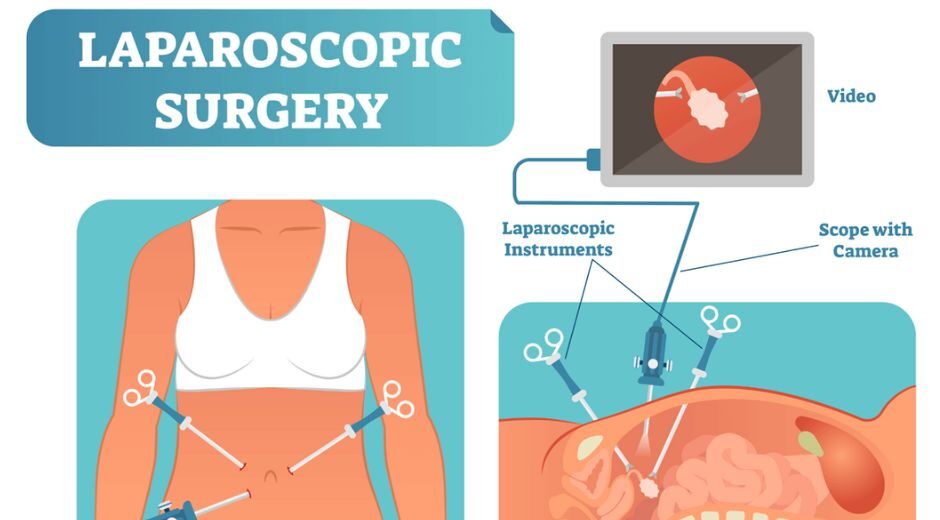Laparoscopic surgery for infertility is a surgical process that allows a fertility doctor to see the inside of the abdomen. In a female, the uterus, fallopian tubes, and ovaries are located in the pelvis which is at the very bottom of the abdomen.
Laparoscopy allows the fertility doctor to see abnormalities so that might interfere with a woman’s ability to conceive a pregnancy. The most common problems are endometriosis, pelvic adhesions, ovarian cysts, and uterine fibroids.
Need of Laparoscopic Surgery for Infertility
Laparoscopy is used in the evaluation and treatment of infertility because it allows the doctor to visualize the internal reproductive organs and identify any potential problems that may be causing infertility, such as endometriosis, scar tissue, or blockages in the fallopian tubes. Additionally, some infertility treatments, such as the removal of ovarian cysts or the surgical correction of tubal blockages, can be performed using a laparoscope.
The procedure of Laparoscopy for Infertility
Laparoscopy is a surgical procedure used to diagnose and treat infertility. Here is the general procedure for a laparoscopy:
- Preparation: The patient is usually put under general anesthesia and is positioned on the operating table. The abdomen is inflated with carbon dioxide gas to create a working space for the surgeon.
- Insertion of the laparoscope: The surgeon makes a small incision near the navel and inserts a thin, lighted tube called a laparoscope into the abdomen. This allows the surgeon to view the pelvic organs and inspect for any abnormalities.
- Surgical procedures: If needed, the surgeon can use additional instruments to perform procedures such as removing cysts, repairing scar tissue, or removing endometrial tissue.
- Removing the laparoscope: Once the procedures are complete, the laparoscope is removed, and the incisions are closed with stitches or surgical glue.
- Recovery: The patient is typically able to go home the same day or the next day. It can return to normal activities within a few days. The recovery time may vary based on the extent of the procedures performed during the laparoscopy.
It’s important to note that laparoscopy is not a guarantee for successful treatment of infertility This procedure may have potential risks and complications. It is best to consult with a healthcare provider because they understand the suitability and potential outcomes of the procedure.
Side effects after Laparoscopy surgery
Some common side effects after Laparoscopic Surgery For Infertility include:
- Pain or discomfort in the abdominal area
- Nausea
- Bloating
- Gas
- Constipation
- Fatigue or weakness
- Sore throat (if a breathing tube was used during the surgery)
- Shoulder pain (from the buildup of gas in the abdomen)
Most side effects usually resolve within a few days to a week after the surgery. However, it is important to follow your doctor’s instructions and report any severe or persistent symptoms to them.
Conclusion:
A Laparoscopic Surgery For Infertility is a thin fiber-optic telescope that is inserted into the abdomen usually through the belly button. The fiber optics allow light to used to see inside the abdomen. Carbon dioxide (CO2) gas is placed into the abdomen prior to inserting the laparoscope. This lifts the abdominal wall and allows for some separation of the organs inside the abdomen making it easier for the fertility doctor to see the reproductive organs during the surgery. Contact Dr. Ranjana Dhanu as she provides the best treatment for infertility in Mumbai.


